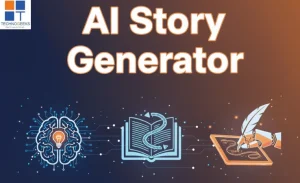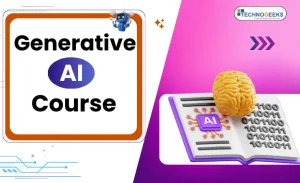Table of Contents
ToggleDocker Interview Questions
If you are planning to interview for a job that involves Docker, don’t worry, we’ve got you covered. Many companies need people who understand Docker because it helps them package and deploy applications faster and more reliably.
It’s a well-known fact that “Docker containers are lighter and use less computer power than traditional virtual machines (VMs)”. This means they start up faster and use resources more efficiently.
So to crack the Docker interview, you have to prepare and learn the topics related to Docker thoroughly.
Interviewers don’t just ask basic questions; they also give you scenarios to see your practical knowledge.
In this blog, we talked about basics, advanced, and scenario based Docker interview questions with answers. So, get ready to answer Docker questions in your next interview with confidence!
Learn DevOps with AWS at Technogeeks. Call us on – 8600998107 for more information.
Basics Docker Interview Questions With Answers
1) What is Docker?
- Docker is a container-based tool that makes it easier to create, deploy, and run applications.
- So containers are nothing but lightweight, portable packages of software that include everything the application needs to run, such as the code, runtime, libraries, and system tools.
- This ensures that the application will work the same way regardless of where it’s run, whether it’s on a developer’s laptop, on a server, or in the cloud.
Also Read – What is Docker in DevOps
2) What are containers, and how are they different from Virtual Machines (VMs)?
- Containers are lightweight packages that include an application and everything it needs to run (like libraries and dependencies).
- Containers help keep applications running the same way in development, testing & production.
- They make it easy to package and deploy software, making the build, test, and deployment processes simpler and more scalable.
- Containers can be started and stopped quickly, and they use fewer resources than virtual machines (VMs).
And the answer of “how containers are different from virtual machines is”:
- VMs include a full operating system along with the application, which makes them larger and slower to start.
- Each VM runs on a hypervisor and has its own OS, which requires more resources (CPU, memory, storage).
- Containers, on the other hand, share the host OS and run as isolated processes, making them more efficient.
3) Explain the Architecture of Docker.
Docker Architecture consists of three main components:
1. Docker Client:
- This is what you interact with when you use Docker commands (like docker run, docker build).
- The Docker client sends these commands to the Docker daemon.
2. Docker Daemon (dockerd):
- The Docker daemon runs on the host machine.
- It listens for Docker API requests and manages Docker objects like images, containers, networks, and volumes.
3. Docker Objects:
- Images: Read-only templates used to create containers.
- Containers: Runnable instances of Docker images.
- Networks: Allow containers to communicate with each other.
- Volumes: Used to store data that persists even after the container is removed.
4) What is the Difference between Docker Image and Docker Container?
| Docker Image | Docker Container | |
| Definition | A Docker image is like a blueprint for a container. | A Docker container is a running instance of a Docker image. |
| Content | Includes everything needed to run an application (code, runtime, libraries). | Uses the content from a Docker image to run the application. |
| Read/Write | Read-only. | Read-write (can have changes during runtime). |
| Storage Location | Stored in a Docker registry (like Docker Hub). | Exists as a running process on the host system. |
| State | Static. | Dynamic (can be started, stopped, moved, and deleted). |
| Usage | Used to create Docker containers. | Used to run applications. |
| Keeps | Images are the same and reusable. | Can be temporary; changes might not be saved. |
Learn DevOps with Azure at Technogeeks. Call us on – 8600998107 for more information.
5) What are the components of Docker?
- Docker Client
- Docker Daemon (dockerd)
- Docker Images
- Docker Container
- Docker Registry
- Docker Compose
6) How can you establish communication between a Docker host and a Linux host?
To establish communication between a Docker host and a Linux host, you can use host networking with docker run –network host my_container.
7) In what situations can you lose data stored in a container?
You can lose your data in a container in the following situations such as –
- If you delete a container, all data stored inside it is lost.
- If a container stops and is restarted, any unsaved data that wasn’t written to permanent storage will be lost.
- If the container crashes or encounters an error, any unsaved data will be lost.
- If there are problems with the Docker host (e.g., system crash, hardware failure), data in running containers can be lost.
- If you rebuild or update the container image and start a new container from the updated image, previous data in the old container will be lost.
Also Read – AWS DevOps Interview Questions
Advanced Docker Interview Questions With Answers
1) What is a Dockerfile?
- So basically, a Dockerfile is a simple text file with instructions that is mainly used to create a custom Docker image. You can write all the details in a Dockerfile.
- It includes a list of commands that tell Docker how to set up the environment inside the container.
2) What are the commands to create a Docker swarm?
Step 1 – Initialize the Swarm
Step 2 – Join Other Machines:
(The <token> and <manager-ip> will be provided by the manager when you run the docker swarm init command.)
3) What are Docker plugins?
- Docker plugins are add-ons that extend Docker’s capabilities.
- They provide additional features like logging, storage, and networking.
- You can think of plugins as extra tools that you can add to Docker to do more things.
Also Read – How Do Agile And DevOps Interrelate?
4) How do you manage sensitive data (e.g., API keys, passwords) in Docker containers?
To Managing Sensitive Data you have to :
- Use Docker Secrets to store sensitive data securely.
- You need to create a secret with:
- Use the secret in a service (for Docker Swarm)
5) Explain how you would set up a CI/CD pipeline for a Docker-based application.
Setting up a CI/CD Pipeline:
- Choose a CI/CD Tool: Use tools like Jenkins, GitLab CI, or GitHub Actions.
- Write a Dockerfile: Create a Dockerfile for your application.
- Pipeline Configuration:
- Define steps in a configuration file (e.g., .gitlab-ci.yml for GitLab).
- Steps include building the Docker image, running tests, and pushing the image to a Docker registry.
- Automate Deployments:
- Set up your pipeline to automatically deploy the container to a staging or production environment after tests pass.
6) What strategies would you use to optimize Docker container performance?
To Optimizing Docker Container Performance:
i) Optimize Dockerfile:
- Use smaller base images (e.g., alpine).
- Combine commands to reduce layers.
ii) Resource Limits:
Set CPU and memory limits to prevent containers from using too many resources.
iii) Use Volumes:
Store permanent data in Docker volumes instead of inside containers.
iv) Monitor and Analyze:
Use tools like Docker stats or third-party monitoring solutions to track performance.
v) Network Optimization:
Use the appropriate network modes and minimize network latency.
vi) Cache Dependencies:
Cache dependencies to avoid downloading them every time you build the image.
vii) Update Regularly:
Keep Docker, the host OS, and dependencies up to date for performance improvements and security fixes.
Also Read – DevOps Engineer Skills
Scenario-Based Docker Interview Questions With Answers
1) Scenario: Your application running in a Docker container is experiencing network connectivity issues with other services. How would you troubleshoot and resolve this issue?
Answer –
i) Check Container Network
ii) Test Connectivity
iii) Check container logs for errors using “docker logs <container_id>”.
iv) Ensure no firewalls or security groups are blocking communication.
v) Verify DNS settings if services are accessed by hostname.
2) Scenario: A critical security vulnerability is discovered in the base image of your Docker containers. How do you handle this situation?
Answers –
i) Identify the Vulnerability
ii) Update Base Image
iii) Rebuild Docker images with the updated base image.
iv) Redeploy Containers
3) Scenario: Your team wants to implement CI/CD for a Dockerized application. What steps will you take to set this up?
Answers –
i) Choose a CI/CD Tool
ii) Write a Dockerfile
iii) Configure CI/CD Pipeline
iv) Automatically build Docker images and run tests in the pipeline.
v) Push the built image to a Docker registry.
vi) Deploy the image to staging/production environments.
4) Scenario: You need to migrate an application running on virtual machines to Docker containers. What steps will you take?
Answers –
Step 1 – Analyze the Application
Step 2 – Create a Dockerfile
Step 3 – Build Docker Image
Step 4 – Run the container locally to ensure it works
Step 5 – Configure Docker networks and volumes as needed.
Step 6 – Deploy to Production
5) Scenario: Your application requires scaling based on traffic load. How do you implement auto-scaling with Docker?
Answers –
Step 1 – Choose an Orchestration Tool
Step 2 – Set up rules for when and how to scale (e.g., based on CPU usage).
Step 3 – In Kubernetes, use a Horizontal Pod Autoscaler (HPA).
Step 4 – Configure Auto-Scaling
Step 5 – Deploy
6) Scenario: Your Docker containers need access to a specific configuration file stored on the host. How would you provide this access?
Answers –
Step 1 – Use Volumes
Step 2 – Docker Run Command
Step 3 – Docker Compose
7) Scenario: You need to ensure that your Docker containers can only communicate with specific networks and not the public internet. How would you configure this?
Answers –
Step 1 – Create Private Networks
Step 2 – Connect Containers
Step 3 – Use firewall rules to block outbound internet access for the containers.
Step 4 – Define network policies to control traffic flow
















